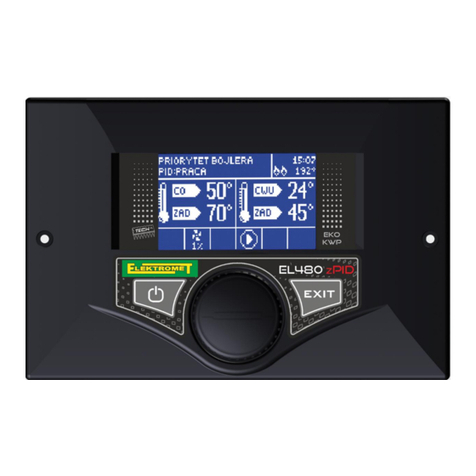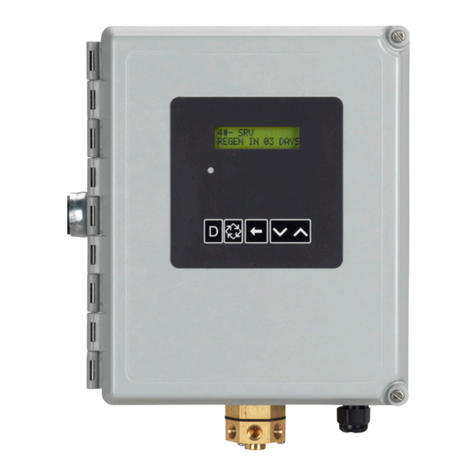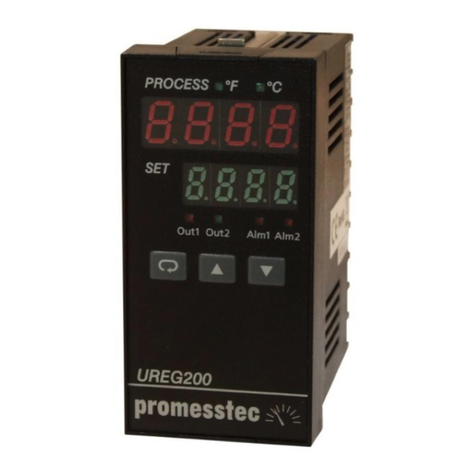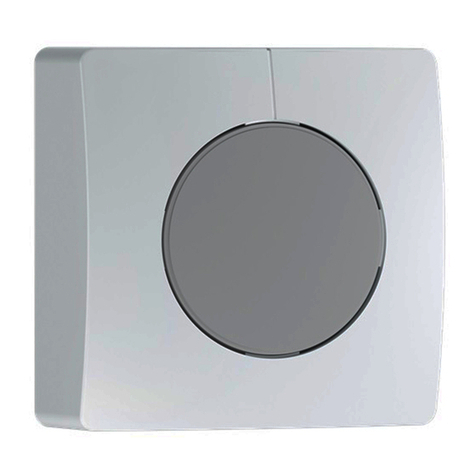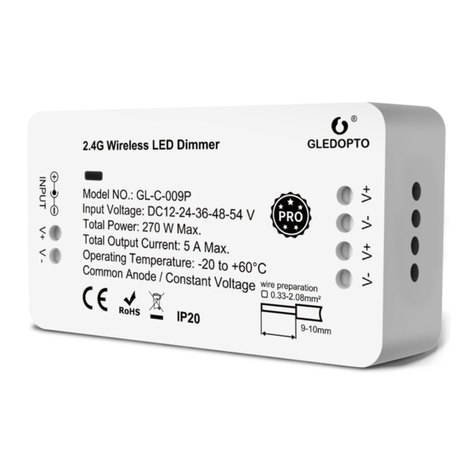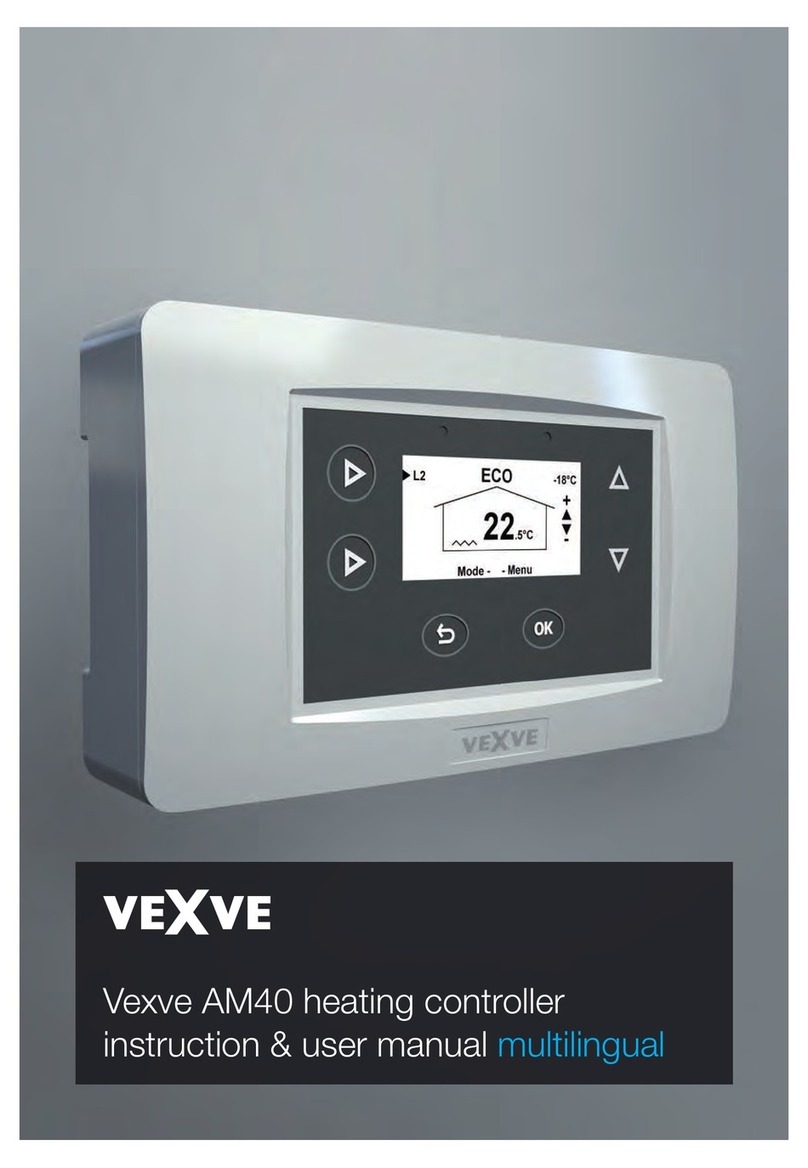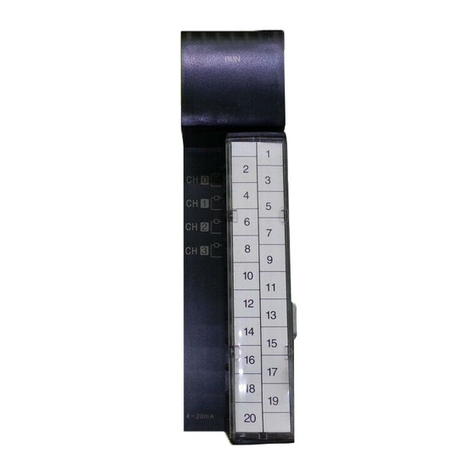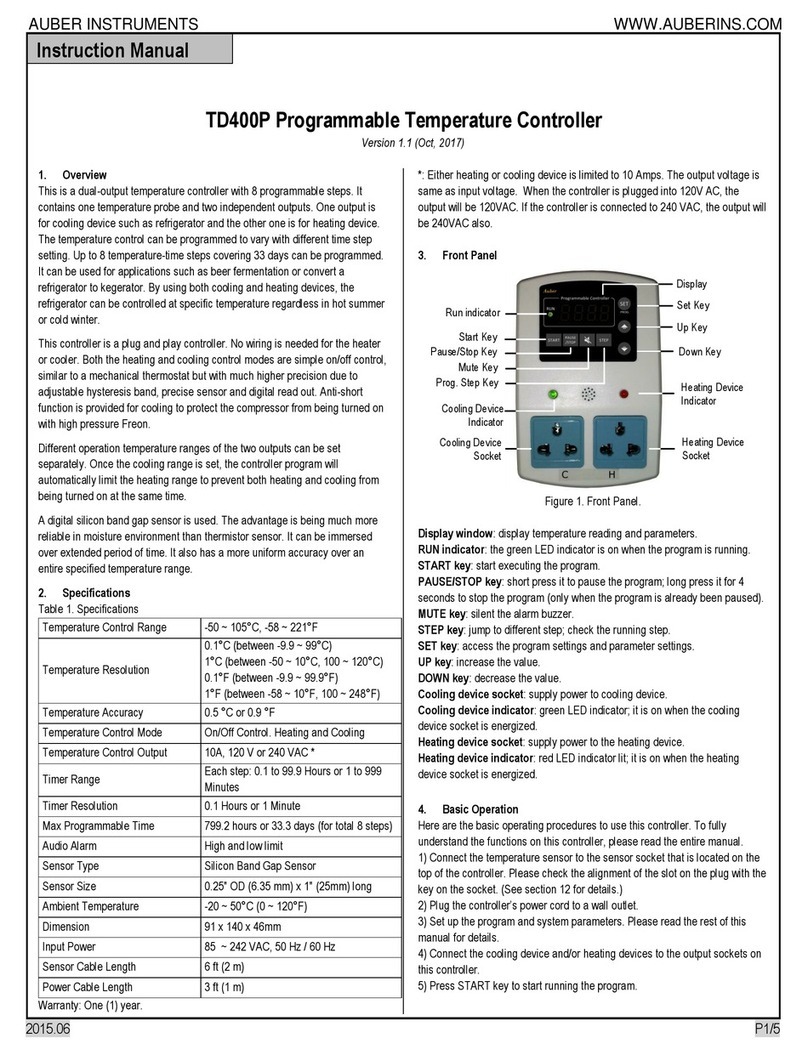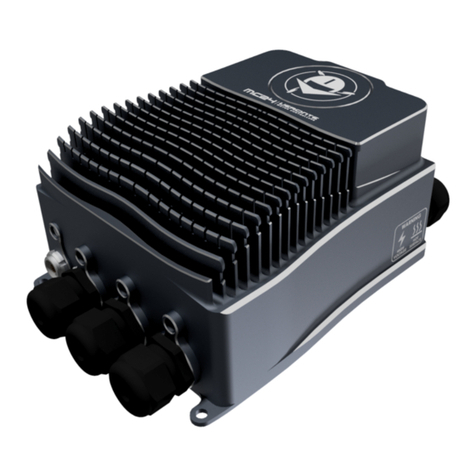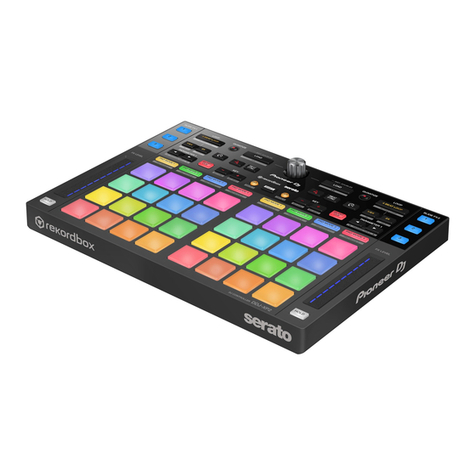Thomson Power Systems Marathon MEC 20 Service manual

9087A – 198th Street, Langley, BC Canada V1M 3B1 Telephone (604) 888-0110
Telefax (604) 888-3381 E-Mail: info@thomsontechnology.com www.thomsontechnology.com
MEC 20
MICROPROCESSOR
ENGINE/GENERATOR CONTROLLER
(WITH REMOTE COMMUNICATION, EXPANSION OUTPUT MODULE &
EAP 110 REMOTE ANNUNCIATOR OPTIONS)
INSTALLATION, OPERATING &
SERVICE MANUAL
Software Version 1.81
PM047 Rev 12 03/03/04


MEC 20 MICROPROCESSOR ENGINE/GENERATOR CONTROLLER
PM047 Rev 12 03/03/04 Thomson Power Systems
CONTENTS
1. INTRODUCTION 1
1.1. PRODUCT REVISION HISTORY 1
1.2. GENERAL DESCRIPTION 3
2. INSTALLATION 5
2.1. GENERAL INFORMATION 5
2.2. BATTERY SUPPLY INPUT 5
2.3. SPEED SENSING INPUT 6
2.4. DC VOLTAGE INPUTS 7
2.5. AC VOLTAGE INPUT 7
2.6. AC CURRENT INPUT 8
2.7. OUTPUTS 9
2.8. EXTERNAL PANEL CONTROL WIRING 9
2.9. REMOTE START CONTACT FIELD WIRING 10
2.10. REMOTE COMMUNICATION WIRING 10
2.11. EXPANSION OUTPUT MODULE LOCATION/INSTALLATION 11
2.12. MEC MOUNTING LOCATION/INSTALLATION 12
2.13. FACEPLATE MOUNTING DIMENSIONS 13
2.14. MEC 20 ASSEMBLY - SIDE VIEW 13
2.15. DIELECTRIC TESTING 14
3. DESCRIPTION 15

MEC 20 MICROPROCESSOR ENGINE/GENERATOR CONTROLLER
PM047 Rev 12 03/03/04 Thomson Power Systems
3.1. LEXAN FACEPLATE 15
3.2. PRINTED CIRCUIT BOARD 17
4. FAULT CIRCUIT DESCRIPTIONS 19
4.1. MEC 20 FUNCTIONAL BLOCK DIAGRAM 20
4.2. INTERNAL FAULT CIRCUITS 21
4.3. DIGITAL FAULT INPUT CIRCUITS 22
4.4. ANALOG FAULT INPUT CIRCUITS 24
5. CONTROL OUTPUT CONTACT DESCRIPTIONS 29
5.1. RUN, CRANK, COMMON FAIL OUTPUT CONTACTS 29
5.2. PROGRAMMABLE OUTPUT CONTACTS 30
6. REMOTE COMMUNICATION OPTION 34
7. EXPANSION OUTPUT MODULE OPTION 38
8. EAP 110 REMOTE ANNUNCIATOR OPTION 41
9. OPERATING INSTRUCTIONS 42
9.1. MEC 20 POWER-UP OPERATION SEQUENCE 42
9.2. MEC 20 DISPLAY MENUS 42
9.3. SEQUENCE OF OPERATION 50
9.4. CONTROL PUSH-BUTTONS 57
10. PROGRAMMING INSTRUCTIONS 59
10.1. SECURITY PASSWORDS 59

MEC 20 MICROPROCESSOR ENGINE/GENERATOR CONTROLLER
PM047 Rev 12 03/03/04 Thomson Power Systems
10.2. BASIC PROGRAMMING OPERATION 60
10.3. MAIN PROGRAMMING MENU 61
10.4. ANALOG FAULT PROGRAMMING MENU 69
10.5. DIGITAL FAULT PROGRAMMING MENU 70
10.6. CALIBRATION MENU 72
11. PROGRAMMING SHEETS 83
11.1. SUMMARY CONFIGURATION DATA SHEET 83
11.2. MAIN CONFIGURATION 84
11.3. ANALOG FAULT PROGRAMMING MENU 87
11.4. DIGITAL FAULT PROGRAMMING MENU 88
11.5. CALIBRATION MENU 89
12. SPECIFICATIONS 90
13. CONNECTION DIAGRAM 91
14. TROUBLE SHOOTING 92
15. NOTES 95

MEC 20 MICROPROCESSOR ENGINE/GENERATOR CONTROLLER

MEC 20 MICROPROCESSOR ENGINE/GENERATOR CONTROLLER
PM047 Rev 12 03/03/04 1Thomson Power Systems
1. INTRODUCTION
1.1. PRODUCT REVISION HISTORY
The following information provides an historical summary of changes made to this
product since the original release.
1.1.1. Software Version
1.81 03/03/04 Changed Oil Pressure Sender Manufacturer requiring revised
pressure/resistance calibration data
New Oil Pressure Sender Thomson p/n-003654, Manufacturer-
Datcon, p/n 102227.
Discontinued Oil Pressure Sender Thomson p/n-000772,
Manufacturer- Isspro, p/n R9279C
Note: The oil pressure senders are not interchangeable with the
software versions.
1.8 02/09/09 Added Programmable Output Feature “EPS Supplying Load”
Added Digital Input Feature “No-Load Test”
Added New Digital Fault Names
Basin Rupture
ATS in Bypass
Fuel Leak
Vent Damper Fail
High Fuel Level
Low Fuel Press
Bat Charger Fail
Fail to Sync
HighIntkManfTemp
Added Independent Programming features for AMF Outputs
Added references for EAP 110 Remote Annunciator
Misc. Display & Menu changes

MEC 20 MICROPROCESSOR ENGINE/GENERATOR CONTROLLER
PM047 Rev 12 03/03/04 2Thomson Power Systems
1.7 02/02/15 Key changes implemented as follows:
•Auto Mains Failure (AMF) logic with new timers, control outputs
and display features
•Line to Neutral AC Voltage Display on 3 Phase 4 Wire Systems
(neutral connection required)
•
Analog Shutdown Capability from Oil Pressure and
Temperature Senders
•Expanded oil pressure operation up to 150 PSI (was 100 PSI)
•Single Point Calibration for Oil Pressure/engine temperature
sender inputs (simplified calibration, field calibration is now
mandatory)
•Programmable Output features now expanded to map to every
available fault circuit
Add new Programmable Output features Engine Ready & Engine
Run (Fuel)
There were also minor changes that are reflected in the manual.
1.6 01/07/18
Added Ready to load programmable output and new Isspro Oil
Pressure sender curves; increased standard digital & analog fault
features.
1.5 00/09/20 Added kVA metering.
1.4 99/12/09 Added new digital faults labels and blank selections.
1.3 98/02/09 New version with communication features, expansion relay module
capability, deletion of “horn” programming, deletion of cooldown
shutdown programmability, deletion of “common fail”
programmability and revised password number.
1.2 97/06/04 Original version.
1.1.2. Operating & Service Manual Version
Rev 12 03/03/04 Changed Oil pressure/resistance calibration data and new software
version 1.81.
Rev 11 02/09/09 Added descriptive information for new software version 1.8

MEC 20 MICROPROCESSOR ENGINE/GENERATOR CONTROLLER
PM047 Rev 12 03/03/04 3Thomson Power Systems
Rev 10 02/02/15 Added descriptive information for new software version 1.7
Rev 9 01/10/17 Clarification of faults required for C282 or NFPA 110.
Rev 8 01/07/18 Addition of “Static Precaution”; deletion of calibration jumpers to
requiring external calibration resistors/potentiometers; standard
fault circuits increase from 12 to 28; Ready status changes to
“Ready to Load”; changes in temperature and pressure calibrations;
extended temperature ratings.
Rev 7 00/12/01 Minor text changes.
Rev 6 00/10/06 Added KVA metering feature.
Rev 5 00/04/06 Changes made to digital fault labels.
Rev 4 99/02/01 Remote communication wiring changes
; multiple controllers that
can be connected changes from 5 to 10.
Rev 3 98/05/08 Corrected minor errors.
Rev 2 98/02/18 New version with communication features; expansion relay module
capability and revised password number.
Rev 1 98/01/22 Corrected minor errors.
Rev 0 97/06/04 Original release.
Contact Thomson Technology, to obtain applicable instruction manuals. Soft copy of
most current version is available at www.thomsontechnology.com.
1.2. GENERAL DESCRIPTION
The Thomson Technology MEC 20 Microprocessor-based Engine/Generator Controller
utilizes the latest advancements in microprocessor design technology for the control and
monitoring of engine-generator sets. The MEC 20 provides a comprehensive array of
operational, protection and display features for automatically controlling an
engine/generator set. All standard and optional features of the MEC 20 are configurable
from the front panel LCD display and are security password protected. The LCD display
screen prompts are in plain English, providing a user-friendly operator interface with
many display options available. The microprocessor design provides high accuracy for
all voltage monitoring, current monitoring and timing functions as well as providing many

MEC 20 MICROPROCESSOR ENGINE/GENERATOR CONTROLLER
PM047 Rev 12 03/03/04 4Thomson Power Systems
standard features which were previously only available as expensive add-on optional
features.
The MEC 20 provides the following advanced features:
•Up to 28 alarm/shutdown fault circuits utilizing analog and digital inputs.
•Standard model meets or exceeds CSA C282, NFPA 110 Level 1 generator set
control requirements.
•RS 422 remote communication port.
•Expansion output module communication port for individual output fault contact
capability.
•Backlit LCD display screen with alpha-numeric readout for display and programming.
•Digital 3-phase voltage, 3-phase current, KVA and frequency metering for generator
output.
•Non-volatile memory retains logic and set points if control power is lost.
•Direct 3-phase voltage sensing inputs on generator supply from 120Vac up to
600Vac (nominal).
•Security password-protected programming levels.
•Self diagnostic features continuously verify processing, I/O and memory circuits.
•Superior EMI/RFI noise immunity and surge performance features as per IEEE
C62.41 requirements.
•Dual microprocessor design provides independent speed sensing circuitry for higher
performance.
CAUTION
contents subject to damage by
STATIC ELECTRICITY
This equipment contains static-sensitive parts. Please observe the following anti-static
precautions at all times when handling this equipment. Failure to observe these
precautions may cause equipment failure and/or damage.
•Discharge body static charge before handling the equipment (contact a
grounded surface and maintain contact while handling the equipment, a
grounded wrist strap can/should also be utilized).

MEC 20 MICROPROCESSOR ENGINE/GENERATOR CONTROLLER
PM047 Rev 12 03/03/04 5Thomson Power Systems
•Do not touch any components on the printed circuit board with your
hands or any other conductive equipment.
•Do not place the equipment on or near materials such as Styrofoam,
plastic and vinyl. Place the equipment on grounded surfaces and only
use an anti-static bag for transporting the equipment.
2. INSTALLATION
2.1. GENERAL INFORMATION
NOTE:
Installations should be done according to all
applicable electrical regulation codes as
required.
The following installation guidelines are provided for general information only
pertaining to typical site installations. For specific site installation information,
consult Thomson Technology as required. Note: Factory installations of TTI
supplied control panels that have been tested and proven may deviate from
these recommendations.
CAUTION!!!
All installation and/or service work performed must be done by qualified
personnel only. Failure to do so may cause personal injury or death.
2.2. BATTERY SUPPLY INPUT
The MEC 20 can operate on any battery supply from 10 to 30 volts DC. The
battery DC negative or common conductor must be grounded to the main
generator-set frame ground. The MEC 20 is internally protected by a solid state
type fuse that protects it from inadvertent shorts on the output terminals. The
solid state fuse will automatically reset when the overcurrent condition is
removed. Wiring from the engine cranking battery to the control panel should
conform to the following guidelines to avoid possible controller malfunction
and/or damage.

MEC 20 MICROPROCESSOR ENGINE/GENERATOR CONTROLLER
PM047 Rev 12 03/03/04 6Thomson Power Systems
2.2.1. Avoid wiring from the engine starter terminals - wiring should go directly
from the battery terminals to the engine control panel (to avoid voltage
drop in the starter cables and starter motor commutator noise). Note:
Unit mounted control panels with short wiring runs may utilize
connections from the starter terminals provided that the specific
application is tested satisfactorily.
CAUTION!!!
The battery charger must be turned off before battery cables are
removed from the battery (i.e. for servicing). Failure to do so may
subject the control panel to an overvoltage condition in which
damage may result.
2.2.2. Wiring from battery to engine control panel should be two - #14 AWG
(2.5mm2) wires (i.e. do not use the engine block as one of the common
conductors).
2.2.3. Under noisy environments (i.e. gas engines with high voltage ignitions,
etc.), wiring from battery should be a twisted pair of #14 AWG (2.5mm2)
wires.
2.3. SPEED SENSING INPUT
Field wiring of the speed sensing signal wires should conform to the following
guidelines to avoid possible controller malfunction and/or damage:
2.3.1. Wiring from magnetic pickup must utilize a 2 conductor shielded/twisted
cable. The drain (shield) wire must be connected at the control panel end
only.
2.3.2. Magnetic pickup voltage at cranking speed must be greater than 3.0VAC.
At nominal speed, magnetic pickup voltage should be between 3.0 and
5VAC.
2.3.3. A single dedicated magnetic pickup is recommended for connection to
the speed sensing input terminals. Note: One common magnetic pickup
may be utilized for the system provided specific test measurements are
done with the equipment installed (i.e. mag pickup voltage levels meet
the required levels).

MEC 20 MICROPROCESSOR ENGINE/GENERATOR CONTROLLER
PM047 Rev 12 03/03/04 7Thomson Power Systems
2.4. DC VOLTAGE INPUTS
All DC voltage inputs to the MEC 20 are optically isolated and filtered for
protection from noise spikes and transients Input wiring must be routed so that it
is not near electrically "noisy" wiring such as ignition, starter wires or main AC
power conductors. All contacts must be “dry” (i.e. non-powered) and one side
must be connected to the common DC negative conductor.
2.5. AC VOLTAGE INPUT
The MEC 20 can accept direct AC voltage input from 120-600Vac (nominal).
Note: Direct input voltage sensing can only be used when the generator utilizes
a single phase 3 wire or 3 phase, 4 wire distribution system with a solidly
grounded neutral conductor. For 3 phase 3 wire systems (i.e. no neutral) or high
voltage systems, potential transformers must be used. Refer to FIGURES #1 - 4
for voltage sensing connections. To display generator line to neutral voltage in a
3 phase 4 wire system, the neutral must be connected as shown.

MEC 20 MICROPROCESSOR ENGINE/GENERATOR CONTROLLER
PM047 Rev 12 03/03/04 8Thomson Power Systems
GRD
MEC 20
FIGURE #1
3Ø, 4W 208/380/480/600VAC DIRECT SENSING
SOLIDLY GROUNDED NEUTRAL SYSTEM
VOLTAGE INPUTS
600VAC L-L, 347VAC L-N
380VAC L-L, 220VAC L-N
480VAC L-L, 277VAC L-N
208VAC L-L, 120VAC L-N
VA
VB
VC
VN
GRD
BA C N
GEN.
GRD
ABC
N
GRD
MEC 20
FIGURE #2
1Ø, 3W 120/240VAC DIRECT SENSING
SOLIDLY GROUNDED NEUTRAL SYSTEM
VOLTAGE INPUTS
240VAC L-L, 120VAC L-N
Note: L1 and L2 phase
voltages must be 120Vac
when referenced to common
neutral. (Delta connected
generators required PTs as per
figure#3 & no phase C PT)
VA
VB
VC
VN
GRD
L2L1 N
GEN.
GRD
L1 L2
N
No Connection
GRD
MEC 20
FIGURE #3
3Ø, 4W WYE PT's
SECONDARY PT VOLTAGE
208VAC L-L, 120VAC L-N
120VAC L-L, 69VAC L-N
VA
VB
VC
VN
GRD
BA C N
GEN.
N
120
120
120
GRD
ABC
GRD
MEC 20
FIGURE #4
3Ø, 3W DELTA PT's
SECONDARY PT VOLTAGE
120VAC L-L
(NO NEUTRAL)
VA
VB
VC
VN
GRD
120
120
GRD
BA C
GEN.
ABC
N
No Connection
G:\ENGINEER\PRODUCTS\MEC20\MEC20_08.VSD REV. 2 02/02/22
2.6. AC CURRENT INPUT
Current transformers (CT’s) must be used to supply the MEC 20 current inputs.
CT polarity is not critical for correct circuit operation. Note: The CT secondary
common conductors must be externally grounded for correct operation. CT’s
must be rated for a minimum of 1.5VA output at the specified accuracy.

MEC 20 MICROPROCESSOR ENGINE/GENERATOR CONTROLLER
PM047 Rev 12 03/03/04 9Thomson Power Systems
CAUTION!!!
When installing or performing any service work on CT circuits, always de-
energize the system before proceeding with any work. Never open circuit
an energized CT as extreme high voltages may result which may cause
serious injury or death.
2.7. OUTPUTS
All outputs from the MEC 20 are relay driven contacts. Relay contacts have a
10A/240Vac resistive, 8A/24Vdc (3 Amp inductive 0.4pf), rating and are isolated
Form A & Form C types. Interposing relays are recommended between the MEC
20 outputs and end devices to prevent internal damage due to possible
excessive current draw and/or damage should an external fault occur. Note:
These outputs will require external overcurrent protection (Maximum 10 Amp).
The use of AC or DC operated solenoids or relays in control systems can
sometimes cause high voltage spikes on the DC power supply, which may cause
electronic devices to fail. Transient suppression devices are recommended for
all inductive devices sharing wiring or if physically located near engine/generator
control panels. For DC operated relays or solenoids, use a suitably rated
counter EMF Diode (or commonly known as “freewheeling” diode). For AC
operated relays or solenoids, use a suitably rated metal oxide varistor (MOV) or
capacitor/resistor suppressor.
2.8. EXTERNAL PANEL CONTROL WIRING
As a minimum, all control wiring shall conform to the local regulatory authority on
electrical installations. Specific wire sizes for typical circuits⊄(of distances up to
100ft (30m)⊇) are as follows:
2.8.1. Battery Control Power #14 AWG (2.5mm2)
2.8.2. Engine Alarm/Shutdown Contacts #16 AWG (1.5mm2)
2.8.3. Remote Start Contact for Transfer Switch #14 AWG (2.5mm2)
2.8.4. Crank & Preheat Output Wiring #14 AWG (2.5mm2) (To pilot
relays)
2.8.5. Speed Sensing Wiring #16 AWG (1.5mm2) 2
Conductor Shielded Cable
2.8.6. Metering Voltage Inputs #16 AWG (1.5mm2)

MEC 20 MICROPROCESSOR ENGINE/GENERATOR CONTROLLER
PM047 Rev 12 03/03/04 10 Thomson Power Systems
2.8.7. Metering Current Inputs (from CT’s) #14 AWG (2.5mm2)
⊇For distances exceeding 100 Ft. (30m) consult TTI.
⊄For unit mounted control panels, wire sizes may be reduced to the next
smallest wire size available.
2.9. REMOTE START CONTACT FIELD WIRING
Field wiring of a remote start contact from a transfer switch to a control panel
should conform to the following guidelines to avoid possible controller
malfunction and/or damage.
2.9.1. Remote start contact wires (2 - #14 AWG (2.5mm2) should be run in a
separate conduit.
2.9.2. Avoid wiring near AC power cables to prevent pick-up of induced
voltages.
2.9.3. An interposing relay may be required if field wiring distance is excessively
long (i.e. greater than 100 feet (30m) and/or if a remote contact has a
resistance of greater than 5.0 ohms.
2.9.4. The remote start contact must be voltage free (i.e. dry contact). The use
of a “powered” contact will damage the engine controller.
2.10. REMOTE COMMUNICATION WIRING
All interconnecting wiring to/from the MEC 20 engine/generator controller
communication port shall utilize #22 AWG (min.) 8 conductor, twisted, shielded
cable with RJ45 connectors. The drain (shield) wire must be connected at the
MEC 20 controller end only. Refer to Section 6 for further information.
Communication cable from the controllers’ com port must be suitably routed to
protect it from sources of electrical interference. Guidelines for protection
against possible electrical interference are as follows:
•Use high quality, 8 conductor shielded cable only with drain wire
grounded at the controller end only.
•Route the communication cable at least 3 M (10”) away from sources of
electrical noise such as variable speed motor drives, high voltage power
conductors, UPS systems, transformers, rectifiers etc.
•Use separate, dedicated conduit runs for all communication cables. Do
not tightly bundle communication cables together in the conduit. Conduit

MEC 20 MICROPROCESSOR ENGINE/GENERATOR CONTROLLER
PM047 Rev 12 03/03/04 11 Thomson Power Systems
should be ferromagnetic type near sources of possible electrical
interference. The entire length of conduit should be grounded to building
earth ground.
•When communication cables must cross over low or high voltage AC
power conductors, the communication cables must cross at right angles
and not in parallel with the conductors.
For additional information on protection against electrical interference, contact
TTI factory.
2.11. EXPANSION OUTPUT MODULE LOCATION/INSTALLATION
The expansion module(s) are to be mounted inside a control panel using four
screws with stand-offs provided. The expansion module must be mounted within
300 metres (1000 feet) wiring distance from the MEC 20 using an 8 conductor
shielded cable provided with the module. The communication cable must not be
bundled together with other control wiring inside the panel. Mounting dimensions
for the expansion output module are shown in FIGURE #5.
7.62 mm
137.16 mm
152.4 mm
152.4 mm
7.62 mm
137.16 mm
4 HOLES
4.75 MM
DIAMETER
(3/16" DRILL)
FIGURE #5
: MEC 20 EXPANSION MODULE MOUNTING DIMENSIONS
G:\ENGINEER\PRODUCTS\MEC20\MEC20_14.VSD
DRAWING SCALE .75:1
0.00 mm
0.00 mm

MEC 20 MICROPROCESSOR ENGINE/GENERATOR CONTROLLER
PM047 Rev 12 03/03/04 12 Thomson Power Systems
2.12. MEC MOUNTING LOCATION/INSTALLATION
The MEC 20 Engine-generator controller is designed for mounting directly onto a
control panel door. Considerations should be given for the following:
•The controller should be installed in a dirt free, dry location away from
extreme heat sources.
•The LCD window should be installed at an optimum height for operator
viewing.
•Adequate space should be provided around the rear of the MEC 20 circuit
board for control wiring.
•Verify that the intended AC voltage input to the controller does not exceed
the maximum allowable level on the control panel door as per the applicable
control panel certification standard.
The MEC 20 controller can be installed onto a door of a control panel using one
of the following methods:
•The first method requires a special door cutout for the LCD display and
LED’s as shown in FIGURE #6. This mounting method requires the lexan
faceplate to be mounted directly onto the door of the control panel. The
controller must be disassembled to mount on the door, then re-assembled.
Refer to FIGURE #7 for correct assembly location of all parts.
•The second method of controller mounting requires a factory supplied
adapter faceplate as shown in FIGURE #8. This method only requires a
single large rectangular hole to be cut out of the door as shown in FIGURE
#9.

MEC 20 MICROPROCESSOR ENGINE/GENERATOR CONTROLLER
PM047 Rev 12 03/03/04 13 Thomson Power Systems
2.13. FACEPLATE MOUNTING DIMENSIONS
268 mm.
126 mm.126 mm.
166 mm.
49 mm.49 mm.
24 mm.24 mm.
75 mm.75 mm.
OUTLINE OF PRINTED CIRCUIT
BOARD UNDER PANEL DOOR
4 HOLES
4 mm. DIAMETER
(3/16" DRILL)
33 mm.
41 mm.
7 mm.
16.5 mm.
20 mm. 32 mm.
80 mm.
8 mm.8 mm.
TOP
CUTOUT
9 HOLES
6 mm. DIAMETER
(1/4" DRILL)
C
C
G:\ENGINEER\PRODUCTS\MEC20_07.VSD
FIGURE #6
2.14. MEC 20 ASSEMBLY - SIDE VIEW
PANEL DOOR
MEC 20 PCB
MEC 20 REAR COVER
#8-32 × 3/8" MACHINE SCREW
# 8-32 INTERNAL TOOTH LOCK WASHER
1.25" ALLUMINUM STANDOFF (HEX)
#8-32 THREAD
#8-32 INTERNAL TOOTH LOCK WASHER
1/2" NYLON SPACER
(#8-32 CLEARANCE
UNTHREADED)
PEM STUD
#8-32 × 1"
G:\ENGINEER\PRODUCTS\MEC20_09.VSD Rev. 0 97/06/02
REARFRONT
HIGH VOLTAGE
MYLAR BARRIER
(mounts on bottom
right hand corner, as
viewed from rear)
FIGURE #7

MEC 20 MICROPROCESSOR ENGINE/GENERATOR CONTROLLER
PM047 Rev 12 03/03/04 14 Thomson Power Systems
Notes:1. Ensure that all lockwashers are installed as shown above.
2. The high voltage mylar barrier (P/N TMW;10805;1) must be installed as shown
when the MEC 20 is installed onto the door of a control panel.
3. When the MEC 20 is installed on a door without 1” PEM studs, 1” machine
screws must be used.
11.5 in
7.5 in
TOP
C
C
CUTOUT
9 HOLES
1/4" DIAMETER
4 STUDS #8/32 1/4"
1/4"
FIGURE #8: ADAPTER FACEPLATE
G:\ENGINEER\PRODUCTS\MEC20_11.VSD Rev. 1 00/07/13
5.5 in
3.5 in
C
C
FIGURE #9:DOOR CUTOUT FOR ADAPTER FACEPLATE
10.875 in
6.875 in
2.15. DIELECTRIC TESTING
Do not perform any high voltage dielectric testing on the control panel with the
MEC 20 connected in the circuit as serious damage will occur to the controller.
All AC control fuses connected to the MEC 20 must be removed if high voltage
dielectric testing is performed on the control panel.
Table of contents
Popular Controllers manuals by other brands
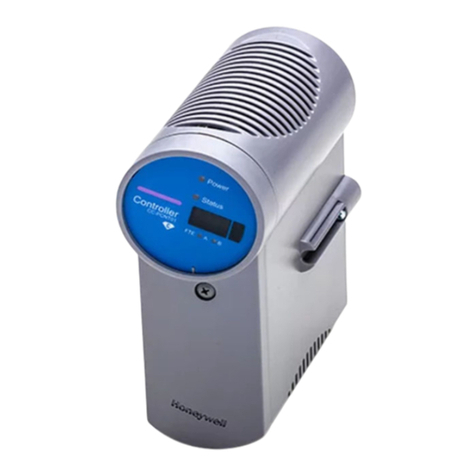
Honeywell
Honeywell Experion 8 Series technical information
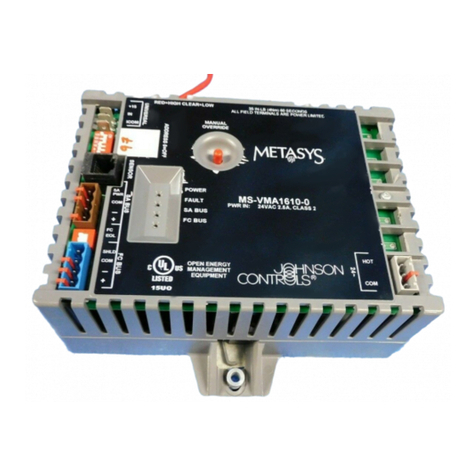
Johnson Controls
Johnson Controls Metasys VMA1610 installation instructions

Eurotops
Eurotops Profi-Partner 44670 instruction manual
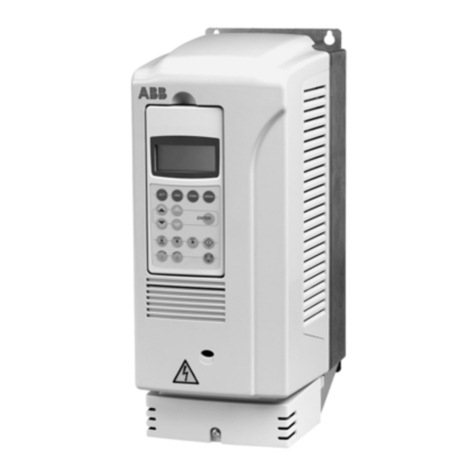
ABB
ABB ACS 800 Series Hardware manual

HORNER
HORNER RCC972 user manual

CDI
CDI 197-0001 Installation and troubleshooting guide

